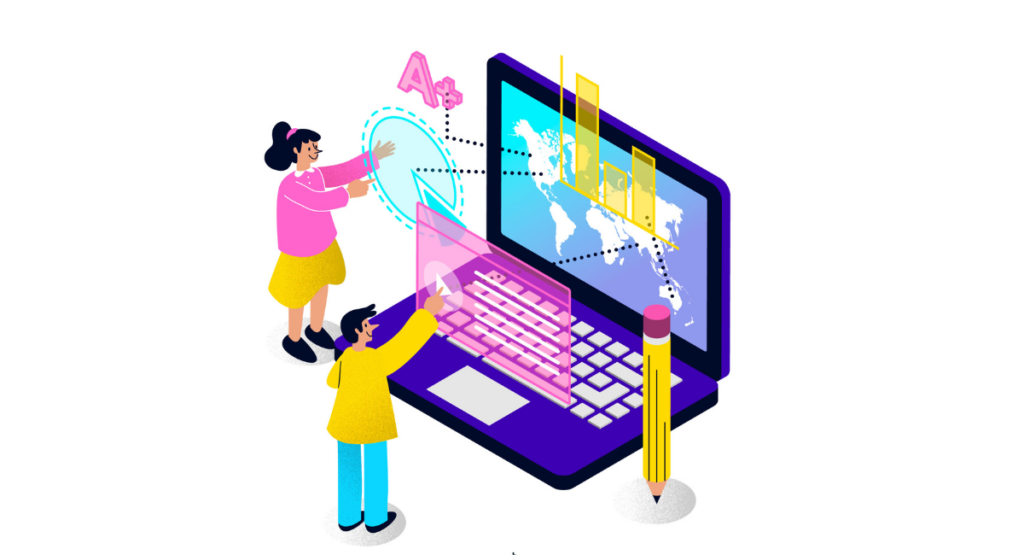Localization testing is one of the phases in the software development process. It tests if an application is not only going to work as expected in different parts of the world but also be in tune with the local culture, languages, and legal requirements.
Given today's globalized market, being able to appeal to a diverse user base is not just beneficial but necessary. This form of testing involves checking all aspects of a software system to ensure that it is very well adapted and appropriate for users from different geographical and linguistic backgrounds.
This type of testing is critical to avoiding cultural missteps and technical errors that may affect user experience and satisfaction.
What is Localization Testing?

Definition of Localization Testing
Localization testing is a software-testing process in which the application under development is tested for its cultural, linguistic, and operational appropriateness for a specific target market or locale.
This is basically about how to ensure the software behaves as expected in multiple languages and cultural contexts. Its prime focus includes language translations, locale-specific content, and UI Adaptation.
Importance of Localization Test in Software Projects
In these regards, localization test for software projects becomes very crucial for a global audience.
It would prove to be helpful in making the application work not only in countries with different cultures but also turn out to be precisely according to the taste of locals, their like and dislike, and not in violation of any legal requirements.
This type of testing avoids possible offence or misconception by showing cultural insensitivity or language misfeasances.
Key Aspects of Localization Testing
Cultural and Linguistic Adaptation
Cultural and linguistic adaptation involves modifying the software to align with the language and cultural expectations of the end user. This could include translation of the user interface, adapting graphics, and modifying content to fit cultural norms and values.
User Experience Consistency
Ensuring user experience consistency across different languages and regions is crucial. Localization testing checks for seamless navigation and intuitiveness of the software irrespective of the user’s locale, maintaining the overall brand experience.
Identification and Resolution of Language-related Issues
This aspect focuses on detecting and fixing language-related errors such as improper translations, text cut-offs due to lengthier words, and font issues that could affect readability and user comprehension.
Handling Cultural Nuances
Handling cultural nuances involves recognizing and correctly implementing locale-specific elements like etiquette, customs, and societal norms which could significantly influence the user's interaction with the software.
Addressing Date and Time Formats
Different regions follow different formats for date and time. Localization test ensures that these formats are correctly implemented according to the target locale’s standards, avoiding confusion and enhancing user convenience.
Dealing with Currency Symbols and Regional Preferences
Currency handling is a critical component, especially for e-commerce applications. Localization testing verifies that the software correctly handles various currency formats and symbols.
Additionally, it checks other regional preferences such as measurement units, address formats, and phone number structures to provide a fully localized user experience.
Localization Testing Tools

Definition of localization testing tools
Localization testing tools guarantee that software applications run as expected in different geographical and multilingual environments.
Such tools permit the testing of not only translated text but also user interface adaption, formats of data input and display, and operational aspects in general adapted to locale-specific requirements.
Basically, it identifies any possible localization issues before the release of a product to a certain market, thus improving the satisfaction and experience of the end-users.
Examples of popular localization testing tools
There are several tools available that assist with localization testing, each with unique features tailored to various testing needs. Some popular examples include:
- Pseudo Localization: It automates the process of testing internationalization aspects by replacing text with an altered version to simulate languages with different character lengths and scripts.
- SDL Passolo: Known for its robust localization management capabilities, SDL Passolo offers extensive support for software developers to adapt applications for global markets.
- Crowdin: A cloud-based tool that facilitates real-time translation management and team collaboration, making it ideal for simultaneous localization projects.
- Loco: A flexible, online localization tool, Loco allows for direct editing of text strings and provides a straightforward method to manage translations.
How to Perform Localization Testing
Steps to conduct localization testing
Localization testing involves several structured steps to maximize the effectiveness of the testing process. The main steps include:
1. Preparation: Define the scope of localization for the specific markets including languages, cultural nuances, and regulatory requirements.
2. Internationalization review: Ensure that the software can handle various languages and locales without structural changes or errors.
3. Translation and linguistic accuracy: Verify that the translation is not only grammatically correct but also culturally appropriate.
4. Functional testing: Test the application’s functionality in the localized environment to identify any operation issues.
5. Cosmetic testing: Check the UI elements like layout, alignment, and visibility of text in different languages.
Best practices for effective localization testing
To ensure comprehensive and efficient localization test, it is essential to adopt best practices such as:
- Engage native speakers: Utilize native speakers to verify linguistic accuracy and cultural appropriateness.
- Automate testing processes: Use localization tools to automate repetitive tasks and free up resources for more critical issues.
- Conduct continuous testing: Integrate localization test into the continuous development process to catch issues early.
- Focus on user experience: Consider the cultural context and local standards that affect user experience while testing localized products.
By adopting these best practices, testers can effectively identify and address potential issues, ensuring that the software meets the expectations and needs of global audiences.
Localization Testing Checklist
Components of a comprehensive localization test checklist
A comprehensive localization testing checklist ensures that all aspects of software behavior are evaluated under locale-specific scenarios. This checklist generally includes:
- Language Accuracy: Verifying correctness, cultural appropriateness, and translational accuracy of all textual content.
- User Interface and Layout: Checking that the UI elements adapt correctly to different languages where content expansion or contraction can occur (e.g., German phrases tend to be longer than English).
- Functional Testing: Ensuring that all functions work according to international and local standards, including input fields accepting localized characters and data formats.
- Currency and Payment Formats: Verification that the software supports local currencies accurately along with appropriate formats for dates, times, and numbers.
- Compatibility: Testing on localized operating systems, browsers, and devices that are most commonly used by the target audience in that locale.
- Legal Requirements: Ensuring compliance with local laws and regulations, such as data privacy laws.
Importance of using a checklist in localization testing
A localization testing checklist can reduce the risks of oversights and help prevent the really poor user experience that can contribute to failures in new markets. It assists systematic examination and ensures that the testing is complete.
Besides, checklists can help in communication among team members, smooth workflow, and act as a reference point; this way, it enhances consistency across the different versions of the software.
Localization Testing vs. Globalization Testing
Differentiation between localization testing and globalization testing
Localization and globalization testing are basically two different stages that aim to make software work for the world.
While the former focuses on customizing the product for a specific regional culture or market in response to related linguistic, cultural, and other locale-specific requirements, it includes translation of the interface and modification of the elements to fit the local context.
On the other hand, globalization testing, often referred to as internationalization testing, primarily checks the software’s capacity to be localized to any locale without errors.
It involves ensuring that the code can support various languages and region formats without modification. This type of testing validates the architecture’s flexibility and the software's ability to accept new localized modules without disrupting functionality.
Importance of both testing types in software development
Globalization and localization testing in a software development lifecycle are both critically important for any product to have global competitiveness.
Globalization testing is the process of ensuring that the framework of the software is solid enough to bear all local specifications without any further changes, and localization test ensures that products tailor-made for particular markets work as they are expected and are culturally correct as well as legally sound.
In a nutshell, both enable a business to scale efficiently across multiple markets while meeting both local and international user expectations.
Real-life Example of Localization Testing
Case study illustrating the impact of localization testing
A notable case of localization testing can be observed in the global release of a popular social media application. Initially developed in English, the app was set to expand its reach by including multiple languages such as Spanish, French, and Mandarin.
Prior to deployment, the company undertook extensive localization test, which uncovered several critical language-specific bugs.
For instance, the app's layout broke in Mandarin due to the character-based writing system, and certain phrases in Spanish conveyed unintended meanings that could potentially offend users.
Adjustments made post-testing ensured the app resonated well with the targeted local audiences, significantly boosting user engagement and satisfaction in those regions.
Lessons learned from the example
This example underscores several valuable lessons in localization testing:
- Linguistic Accuracy: It is crucial to engage native speakers during testing to ensure the translation and contextual suitability of content.
- Cultural Sensitivity: What works in one culture may not work or can be misinterpreted in another. Localization testing helps identify such cultural nuances.
- Technical Adaptability: Testing should not only focus on language but also on how well the software interfaces adapt to different languages' text inputs and display formats.
By foregrounding these aspects, companies can greatly enhance user experience and expand their global market presence effectively.
Book a Demo and experience ContextQA testing tool in action with a complimentary, no-obligation session tailored to your business needs.
Conclusion
Recap of the significance of localization testing in software projects
Localization testing makes sure that software products meet the linguistic, cultural, and functional expectations set by users worldwide.
This type of testing is critical to picking up issues that otherwise may remain hidden from the developers during development phases, like inconsistencies in date formats, currency issues, and translation errors.
Knowing these details can greatly enhance the user's experience and let software not only work but also be attuned to local customs and preferences.
Encouragement to incorporate localization testing for global user satisfaction
Incorporating localization testing into your software development process is not just a step towards expanding your market reach; it's an essential strategy for global success.
By valuing and addressing the localized needs of your target audiences, your product becomes more accessible and appealing across different regions.
This effort not only boosts user satisfaction but also strengthens brand loyalty and competitive advantage in the international market. Embrace localization test as a key component of your quality assurance to achieve worldwide user happiness.
Also Read - AWS for Testing – Top 3 Use Cases for QA Testers | AWS Testing Explained
We make it easy to get started with the ContextQA tool: Start Free Trial.
